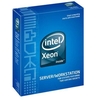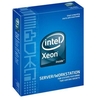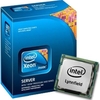-
Home
-
Contributors
-
International
-
Account
-
Information
More From Contributor
- up to 50% greater than the industry-leading Dual-Core Intel Xeon processor in the same power envelope. CPU Speed
- 2.26 G Hz Bus Speed
- 5.86 GT/s L3 Cache 8MB Package Type
- LGA 1366 Core Stepping
- D0 Thermal Design Power
- 80w VID Voltage Range
- 0.75V ~ 1.35V ...
- 2.40 G Hz L3 cache Size
- 12MB Socket
- 1366 Thermal Power Design
- 80W VID VOltage Range -1.3V Note
- fan & heatsink not included ...
- 2.40 G Hz L3 Cache
- 8MB Socket
- 1156 Therman Power Design
- 95W VID Voltage Range
- 0.70
- 1.400V ...
- Intel Turbo Boost Technology 2.0 Intel v Pro Technology Intel Hyper-Threading Technology Intel Virtualization Technology (VT-x) Intel Virtualization Technology for Directed I/O (VT-d) Intel Trusted Execution Technology AES New Instructions Intel 64 Enhanced Intel Speed Step Technology Intel Demand Based Switching Thermal Monitoring Technologies Intel Fast Memory Access Intel Flex Memory Access Execute Disable Bit Intel VT-x with Extended Page Tables (EPT)
Specification
- Manufacturer
- Intel CPU Type
- Xeon CPU Model
- E3-1240V2 Socket
- 1155 Core Size
- 22 nm Core
- Quad Core No. of Threads
- 8 Core Ratio
- 34 x Clock Speed
- 3.4 GHz Turbo Speed
- 3.8 GHz FSB Speed
- N/A QPI Speed
- N/A DMI Speed: 5 GT/s Processor Graphics
- N/A GPU Speed
- N/A Max. Memory Size
- 32GB Max. Memory Speed
- DDR3 – 1600 Intel Smart Cache
- 8MB Max TDP
- 69W Package Type
- Retail ...
Size: 76.0 x 56.5 mm The Intel Xeon 4210R 2.4 G Hz Ten Core Processor enhances the performance & the speed of your system. in addition, the Virtualization Technology enables migration of more environments. It supports enhanced Speed Step technology that allows tradeoffs to be made between performance & power consumption. Its Thermal Monitoring Technologies protect the processor package & the system from thermal failure through several thermal management features. The VT-x with Extended Page Tables (EPT) also known as Second Level Address Translation (SLAT), provides acceleration for memory intensive virtualized applications. Packed with more features, the Xeon 4210R 2.4 G Hz Ten Core Processor is the ideal choice for virtually all of your data demanding or standard enterprise infrastructure applications. This product is compatible with the following systems:
- Power Edge T640
- Power Edge R540
- Power Edge R440
- Power Edge C6420
- Power Edge R740xd 2
- Power Edge R740XD
- Power Edge T440
- Power Edge FC640
- Power Edge M640 VRTX
- Power Edge MX740C
- Power Edge R640
- Power Edge M640
- Power Edge R740 ...
Intel Xeon Silver 4208 / 2.1 GHz Processor - 8-core / 16 Threads
Technology (Intel HT Technology) delivers two processing threads per physical core. Highly threaded applications can get more work done in parallel, completing tasks sooner. Intel Virtualization Technology (VT-x) Intel Virtualization Technology (VT-x) allows one hardware platform to function as multiple “virtual” platforms. It offers improved manageability by limiting downtime and maintaining productivity by isolating computing activities into separate partitions. Intel Virtualization Technology for Directed I/O (VT-d) Intel Virtualization Technology for Directed I/O (VT-d) continues from the existing support for IA-32 (VT-x) and Itanium processor (VT-i) virtualization adding new support for I/O-device virtualization. Intel VT-d can help end users improve security and
reliability of the systems and also improve performance of I/O devices in virtualized environments. Intel VT-x with Extended Page Tables (EPT) Intel VT-x with Extended Page Tables (EPT), also known as Second Level Address Translation (SLAT), provides acceleration for memory intensive virtualized applications. Extended Page Tables in Intel Virtualization Technology platforms reduces the memory and power overhead costs and increases battery life through hardware optimization of page table management. Intel TSX-NI Intel Transactional Synchronization Extensions New Instructions (Intel TSX-NI) are a set of instructions focused on multi-threaded performance scaling. This technology helps make parallel operations more efficient via improved control of locks in software. Intel 64 Intel 64
architecture delivers 64-bit computing on server, workstation, desktop and mobile platforms when combined with supporting software.¹ Intel 64 architecture improves performance by allowing systems to address more than 4 GB of both virtual and physical memory. Instruction Set An instruction set refers to the basic set of commands and instructions that a microprocessor understands and can carry out. The value shown represents which Intel’s instruction set this processor is compatible with. Instruction Set Extensions Instruction Set Extensions are additional instructions which can increase performance when the same operations are performed on multiple data objects. These can include SSE (Streaming SIMD Extensions) and AVX (Advanced Vector Extensions). of AVX-512 FMA Units Intel
Advanced Vector Extensions 512 (AVX-512), new instruction set extensions, delivering ultra-wide (512-bit) vector operations capabilities, with up to 2 FMAs (Fused Multiply Add instructions), to accelerate performance for your most demanding computational tasks. Enhanced Intel SpeedStep Technology Enhanced Intel SpeedStep Technology is an advanced means of enabling high performance while meeting the power-conservation needs of mobile systems. Conventional Intel SpeedStep Technology switches both voltage and frequency in tandem between high and low levels in response to processor load. Enhanced Intel SpeedStep Technology builds upon that architecture using design strategies such as Separation between Voltage and Frequency Changes, and Clock Partitioning and Recovery. Intel Speed Shift
Technology Intel Speed Shift Technology uses hardware-controlled P-states to deliver dramatically quicker responsiveness with single-threaded, transient (short duration) workloads, such as web browsing, by allowing the processor to more quickly select its best operating frequency and voltage for optimal performance and power efficiency.
- External links may include paid for promotion
- Availability: In Stock
- Supplier: Ebuyer
- SKU: 1045797
Product Description
Intel Turbo Boost Technology Intel Turbo Boost Technology dynamically increases the processor's frequency as needed by taking advantage of thermal & power headroom to give you a burst of speed when you need it, & increased energy efficiency when you don’t. Intel v Pro™ Platform Eligibility Intel v Pro™ Technology is a set of security & manageability capabilities built into the processor aimed at addressing four critical areas of IT security: 1) Threat management, including protection from rootkits, viruses, & malware 2) Identity & web site access point protection 3) Confidential personal & business data protection 4) Remote & local monitoring, remediation, & repair of PCs & workstations. Intel Hyper-Threading Technology Intel Hyper-Threading Technology (Intel HT Technology) delivers two processing threads per physical core. Highly threaded applications can get more work done in parallel, completing tasks sooner. Intel Virtualization Technology (VT-x) Intel Virtualization Technology (VT-x) allows one hardware platform to function as multiple “virtual” platforms. It offers enhanced manageability by limiting downtime & maintaining productivity by isolating computing activities into separate partitions. Intel Virtualization Technology for Directed I/O (VT-d) Intel Virtualization Technology for Directed I/O (VT-d) continues from the existing support for IA-32 (VT-x) & Itanium processor (VT-i) virtualization adding new support for I/O-device virtualization. Intel VT-d can help end users improve security & reliability of the systems & also improve performance of I/O devices in virtualized environments. Intel VT-x with Extended Page Tables (EPT) Intel VT-x with Extended Page Tables (EPT), also known as Second Level Address Translation (SLAT), provides acceleration for memory intensive virtualized applications. Extended Page Tables in Intel Virtualization Technology platforms reduces the memory & power overhead costs & increases battery life through hardware optimization of page table management. Intel TSX-NI Intel Transactional Synchronization Extensions New Instructions (Intel TSX-NI) are a set of instructions focused on multi-threaded performance scaling. This technology helps make parallel operations more efficient via enhanced control of locks in software. Intel 64 Intel 64 architecture delivers 64-bit computing on server, workstation, desktop & mobile platforms when combined with supporting software.&sup 1; Intel 64 architecture improves performance by allowing systems to address more than 4 GB of both virtual & physical memory. Instruction Set An instruction set refers to the basic set of commands & instructions that a microprocessor understands & can carry out. The value shown represents which Intel’s instruction set this processor is compatible with. Instruction Set Extensions Instruction Set Extensions are additional instructions which can increase performance when the same operations are performed on multiple data objects. These can include SSE (Streaming SIMD Extensions) & AVX (Advanced Vector Extensions). of AVX-512 FMA Units Intel Advanced Vector Extensions 512 (AVX-512), new instruction set extensions, delivering ultra-wide (512-bit) vector operations capabilities, with up to 2 FMAs (Fused Multiply Add instructions), to accelerate performance for your most demanding computational tasks. Enhanced Intel Speed Step Technology Enhanced Intel Speed Step Technology is an advanced means of enabling high performance while meeting the power-conservation needs of mobile systems. Conventional Intel Speed Step Technology switches both voltage & frequency in tandem between high & low levels in response to processor load. Enhanced Intel Speed Step Technology builds upon that architecture using design strategies such as Separation between Voltage & Frequency Changes, & Clock Partitioning & Recovery. Intel Speed Shift Technology Intel Speed Shift Technology uses hardware-controlled P-states to deliver dramatically quicker responsiveness with single-threaded, transient (short duration) workloads, such as web browsing, by allowing the processor to more quickly select its best operating frequency & voltage for optimal performance & power efficiency.
Reviews/Comments
Add New
Intelligent Comparison
We couldn't find anything!
Perhaps this product's unique.... Or perhaps we are still looking for comparisons!
Click to bump this page and we'll hurry up.
Price History
Vouchers
Do you know a voucher code for this product or supplier? Add it to Insights for others to use.


 United Kingdom
United Kingdom
 France
France
 Germany
Germany
 Netherlands
Netherlands
 Sweden
Sweden
 USA
USA
 Italy
Italy
 Spain
Spain














 Denmark
Denmark